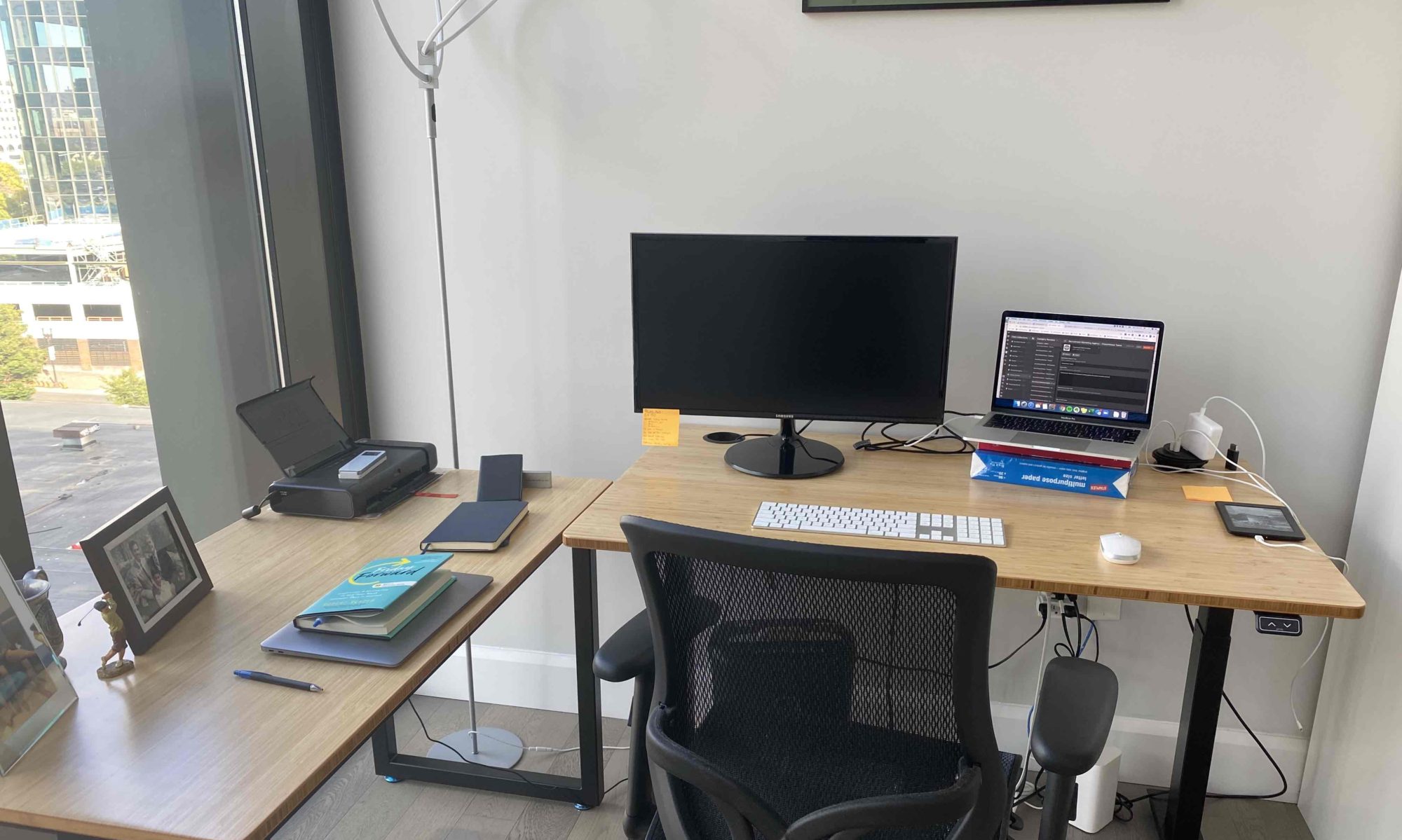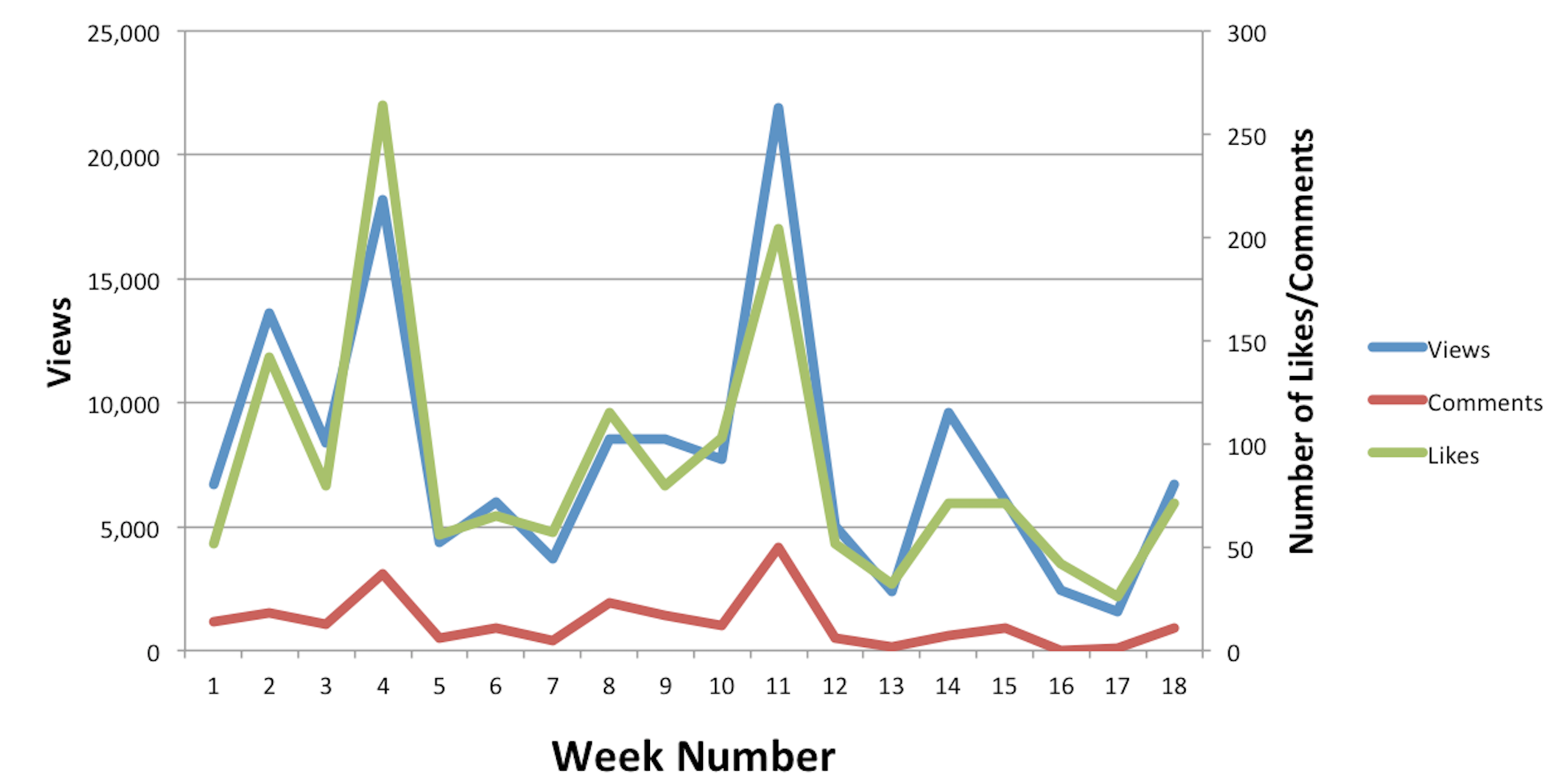Context: I’m one of the founders of NextWave Hire, we sell software to HR that helps employers market their company as a great place to work.
At the start of 2018, we were looking for marketing tactics that would drive new business for $0 in marketing spend. We found a channel that drove us >$30k in new business and wanted to share what we learned for others out there trying to grow their companies.
The Idea
At the start of the year I started a marketing experiment we dubbed “Whiteboard Wednesdays.” The basic idea was to record a ~3 min video about a given topic related to HR/Talent Acquisition, post it on LinkedIn, and write up a blog post about it to send to our mailing list. The plan was to do this each week as long as it “worked.”
My goals were to share useful information that would advance HR (with the idea that rising tides lift all ships), and to grow NextWave Hire’s brand in order to drive more leads and customers.
Why I was attracted to this strategy:
- It cost nothing but time. We’re a bootstrapped company, and generally speaking very cost conscious.
- Even the time it did take was minimal. Each week I spend ~2 hours each week to shoot/edit/post the video, write a blog post, and send it out via Mailchimp to our opt in list.
- I was able to indulge my desire to teach. I truly love sharing knowledge (hence this post).
- It let us share more of our personalities as a company, which doesn’t always come out in eBooks, blog posts, etc. Shout out to Chris Savage at Wistia for encouraging us to do this more.
Hypothesis: We could quickly shoot/produce interesting and relevant video content that would perform well enough on LinkedIn for us to drive new business with a $0 budget.
The MVP
My initial test of this strategy was actually to post a video we’d already recorded where I explained the ROI of a new careers site to an intern. A few people who’d seen it said it was “so you.” I thought “ok, I’ll post this it LinkedIn and see what sort of viewership we can get.”
That video got 7k views, 14 comments and 52 likes. Not bad! Plus, a few companies in our sales pipeline saw it and moved down the funnel. Ok, so there was some tangible ROI from this. But, could we do this repeatably? Also, was this just some trick LinkedIn was playing on us where the first video we posted would get a ton of views to try and get us on the drug of creating content for the platform?
For the next 4 months, I made a new video each week (well, I missed 2-3 weeks when I was on vacation, or at a conference) about some lesson I thought was important to impart to HR. While these topics were all related to stuff we do at NextWave Hire, I never mentioned our product, nor made this about the company. I authentically wanted to teach something – and I think that was important to making these successful.
A Bit on Process
Here is the high level on how we put these together:
- I keep a running list of potential topics in Evernote. Each Wednesday I browse it to find something I want to talk about. Usually these topics are the result of a conversation I’ve had with someone in person/online about a challenge they’re struggling with that relates to employer branding, recruitment marketing, or talent acquisition more broadly.
- I sketch out what the whiteboard will look like on a sticky note.
- I (usually) have my intern write it on the board, since my handwriting is terrible.
- I don’t practice, we just do a take and record it with an iPhone. Whoever is in the room gives me some feedback on anything that wasn’t clear or if I need to do some jumping jacks to get my energy up. I then do a 2nd take which is usually the one we use.
- I Airdrop the video to my computer, trim the video in Quicktime, and then upload it to LinkedIn with a message around what it’s about. I post to my personal LinkedIn which is by far the best distribution channel we have.
- We write a short blog post and post it to our blog, we then send this out to our newsletter via MailChimp. There are also a few sites that like to re-post our videos, some of which drive significant views that aren’t incorporated into the below stats.
- I then hope people start liking/commenting. What makes a video more or less successful is still a bit of a mystery to me – some combination of topic, what I wear, and what time we post it. My advice is to be authentic, not gimmicky, and talk about a pain that you know your audience has because you’ve been asked about it and can give some sort of unique insight that can also be distilled into a 3 min video.
- I’ll make sure to spend 30 mins each day interacting with people via LinkedIn who comment, or who connect with me after viewing the video
Here’s our most watched video we’ve had thus far:
Stats & ROI
Here are some of the stats:
- In total, we’ve made 17 videos as of May 3, 2018
- The average video gets 6,719 views
- The average video gets 11 comments
- The average video gets 71 likes
- In total, that means 134,817 views, 233 comments, 1,512 likes. I’m very happy with the reach we’ve gotten. Of course, there are those 1/100 LinkedIn posts that get 200k views alone…maybe we’ll eventually get one of those.
I’m a bit embarrassed to say that we haven’t done a tremendous job in tracking how many leads we’ve gotten through this, nor how many sales have been influenced by this content.
Realistically, we’re a really small company and we know this is working – just not HOW well. If I had to guess, we’ve probably driven an average of 1 MQL/week through these videos, and I’d say nearly every single MQL in our pipeline has seen these videos, which is one of the many reasons our sales cycle and close rates are moving in the right direction in 1H 2018.
Despite not tracking meticulously, I know off the top of my head we’ve booked >$30k of new ARR through this method in the 1H 2018, with $0 in spend!
Also:
- We’ve been asked to do more speaking engagements
- We’ve been contacted by potential partners
- We’ve stayed top of mind with advisors and others in our network
- I get ~5 new relevant LinkedIn connection requests per day (mostly from HR people)
- We’ve learned what topics are most interesting to our market
Summing Up
Ok, so this whole post has really been geared towards driving new leads. But, what I’d also like to point out is that I hope we’ve helped make a dent in the recruitment marketing knowledge gap as well.
One of the reasons this has been a success is that at the core we are trying to educate the HR market with these videos, as opposed to promote the hell out of our product. The topics are typically inspired by a conversation we had in the previous week about a specific point within recruitment marketing and employer branding. Of course, the more people who believe recruitment is like marketing, the more customers we get :).
We’ll no doubt continue this effort well into the summer, and I hope much longer than that. To check out all of our past videos/blog posts related to this effort, you can go here.
Have you done a similar experiment? Let me know about it in the comments, or shoot me a DM, it’d be great to exchange learnings. I’m also happy to answer any questions about what we did that I may have glossed over in this post.

